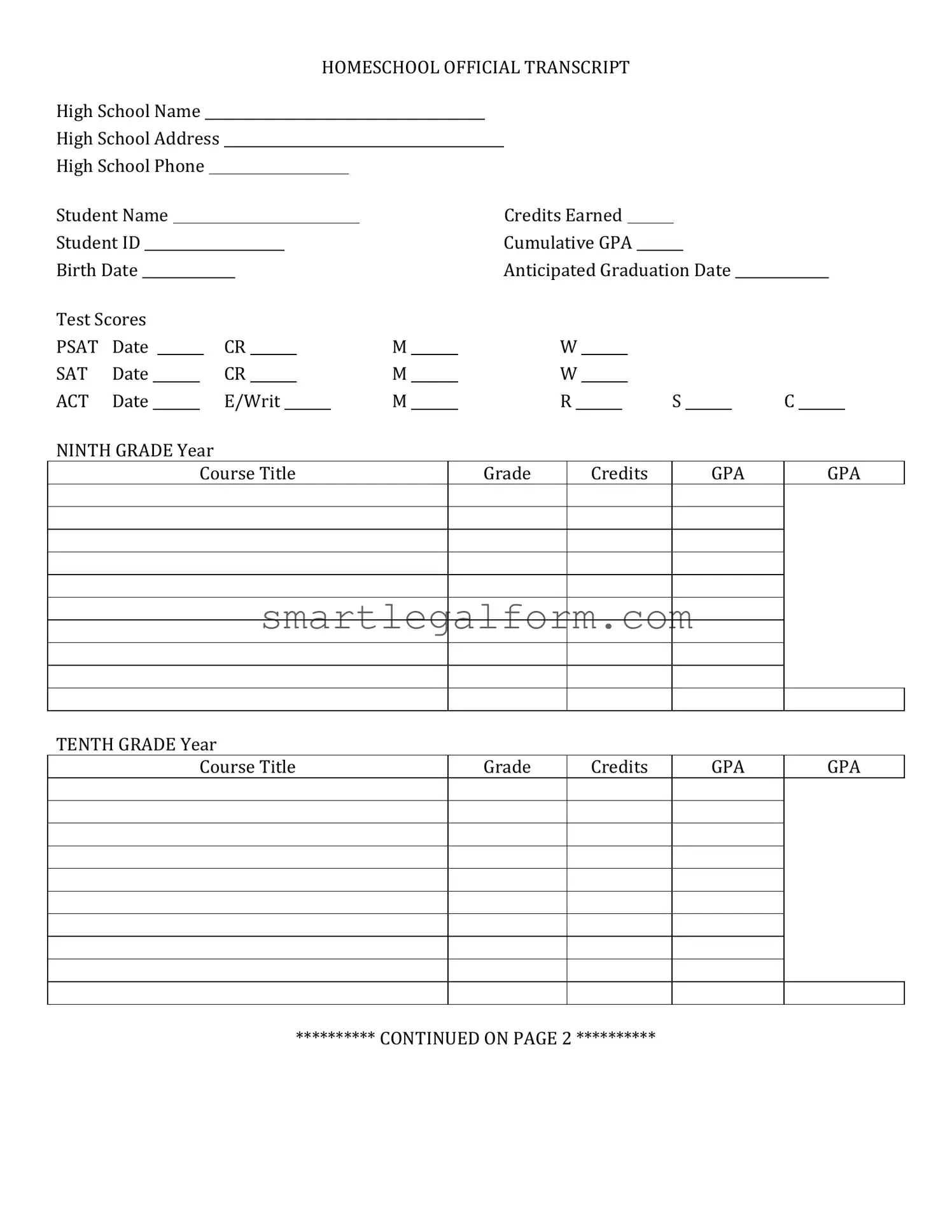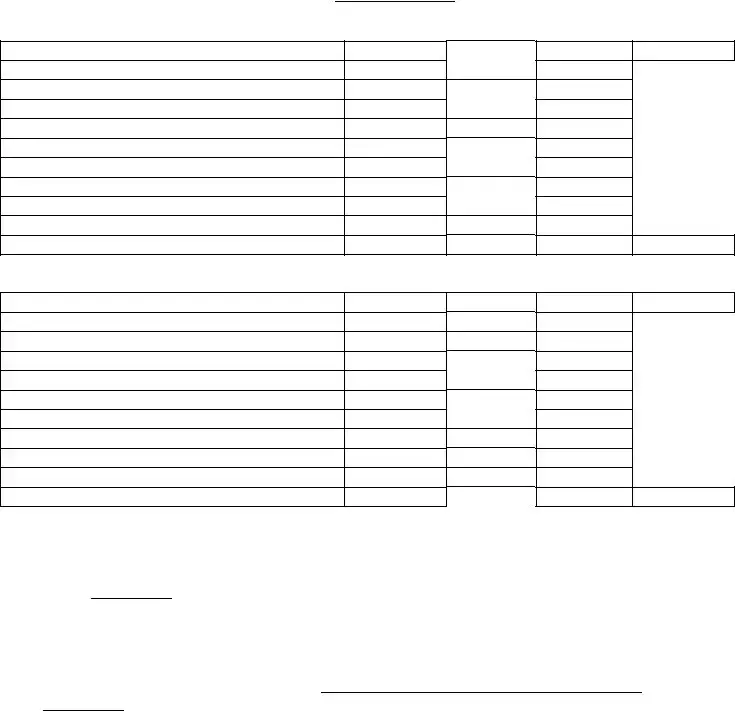Filling out a High School Transcript form can be a straightforward process, but many people make common mistakes that can lead to delays or complications. One frequent error is not including all relevant courses. Students often forget to list elective classes or advanced placement courses, which can impact their overall GPA.
Another mistake is providing inaccurate grades. Sometimes, students misremember their grades or fail to update them after final exams. This can lead to discrepancies between the transcript and the student's actual performance, causing confusion for colleges or employers.
Some individuals neglect to check the format of the transcript. Different institutions may have specific requirements regarding how transcripts should be presented. Failing to follow these guidelines can result in the form being rejected.
Inconsistent naming conventions can also create issues. If a student uses a nickname on the form but their official documents display their full name, it may lead to complications in verifying their identity. Always use the name as it appears on official records.
Another common error is not including the correct contact information for the school. If the school’s address or phone number is outdated, it can hinder the verification process. Always double-check that this information is current.
Some people forget to sign the form. A signature is often required to validate the document. Without it, the transcript may not be considered official, which can cause delays in processing.
Providing incomplete dates can also be problematic. Students sometimes leave out important dates, such as when they started or finished a particular course. This information is crucial for a complete academic history.
Inaccurate or missing information about extracurricular activities is another mistake. Colleges often look for well-rounded students, and omitting these details can affect admissions decisions.
Some individuals fail to proofread their forms. Typos or grammatical errors can undermine the professionalism of the transcript. Taking the time to review the form can prevent these simple mistakes.
Finally, not keeping a copy of the submitted transcript is a mistake many make. Having a personal record can be helpful for future applications or disputes. Always keep a copy for your own reference.


